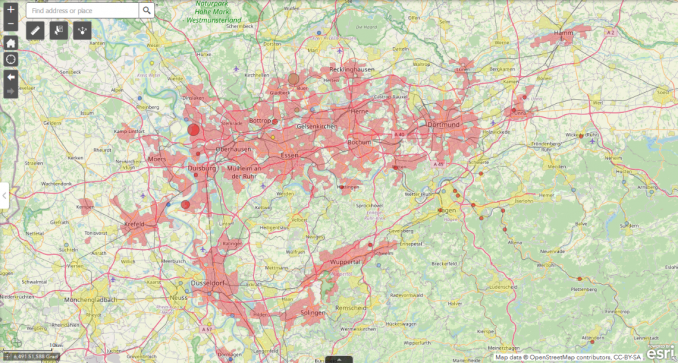FORECAST/eLOAD
-
07.08.2020 Final conference of the H2020 Hotmaps project presents an open data toolbox
“Heating and cooling planning for greener cities: local resources first” was the topic of the final conference of the Hotmaps project. The event took place entirely online and included different plenary and parallel sessions. Around 70 people remained online all the time.
Industrial excess heat for district heating: Database shows great potential for supplying households
07.08.2020
Excess heat from energy-intensive industries is often suitable for use in district heating systems but is usually unutilized. A detailed overview of the potentials available in the EU is now provided by a database of the sEEnergies project. In Germany, 29 petajoules of excess heat from industrial sites could be used, which corresponds to the demand of more than half a million households. The information is available as maps and downloadable datasets.
In the EU project sEEnergies, a consortium of universities and research institutes is developing a holistic modelling approach to quantify the potential for energy efficiency in buildings, transport and industry throughout the EU and to make this knowledge exploitable. One possibility for the efficient and low-carbon heat supply of buildings is the use of industrial excess heat in district heating systems. Energy-intensive industrial sites in the chemical, iron and steel, cement, glass, paper and refinery sectors have a lot of excess heat, mainly through flue gases, but at present this heat is rarely used.

The consortium has linked four databases in order to assess and visualize this hitherto mostly unused potential throughout Europe. Fraunhofer ISI has used a new methodology to determine the excess heat potential. For this purpose, the project team has created a database of 1,608 industrial sites. In this database, the locations are compared as heat sources with data on heat demand and existing and maximum possible district heating networks in a geographic information system (GIS). The data obtained is available as a map view and the datasets can be downloaded.
This first-time linking of EU-wide databases and the geographical representation show: In Germany, 29 petajoules (PJ) and in Europe 151 PJ - and thus more than 35 percent of industrial excess heat in each case - are available at a maximum distance of ten kilometers from existing district heating systems and could thus be fed into the district heating systems. With a final energy consumption of district heating of 1,945 PJ in the European Union, eight percent of today's district heating demand throughout the EU, respectively seven percent in Germany, could thus be covered by excess heat sources from energy-intensive industries.
Additional similar synergies can be identified with the help of the calculated potentials and the spatial analysis. In the Ruhr Area, for example, as a densely populated region characterized by industry, the potentials are particularly high: Large amounts of industrial excess heat could be integrated, while the existing district heating networks could be expanded cost-efficiently.
The ambitious expansion of efficient district heating networks and the connection of industrial excess heat sources to district heating systems should be central elements in the transition to a sustainable and CO2-neutral heat supply in Europe. To this end, obstacles must be removed, for example, by providing market access to heating networks for third parties and securing long-term supply contracts through financial coverage of downtimes. However, industrial excess heat alone will not suffice: The main source of district heating in the future has to be renewable energies, in combination with large heat pumps and decentralized heat pumps.
Further information:
© 2024 Fraunhofer ISI | Publishing Notes | Data Protection


